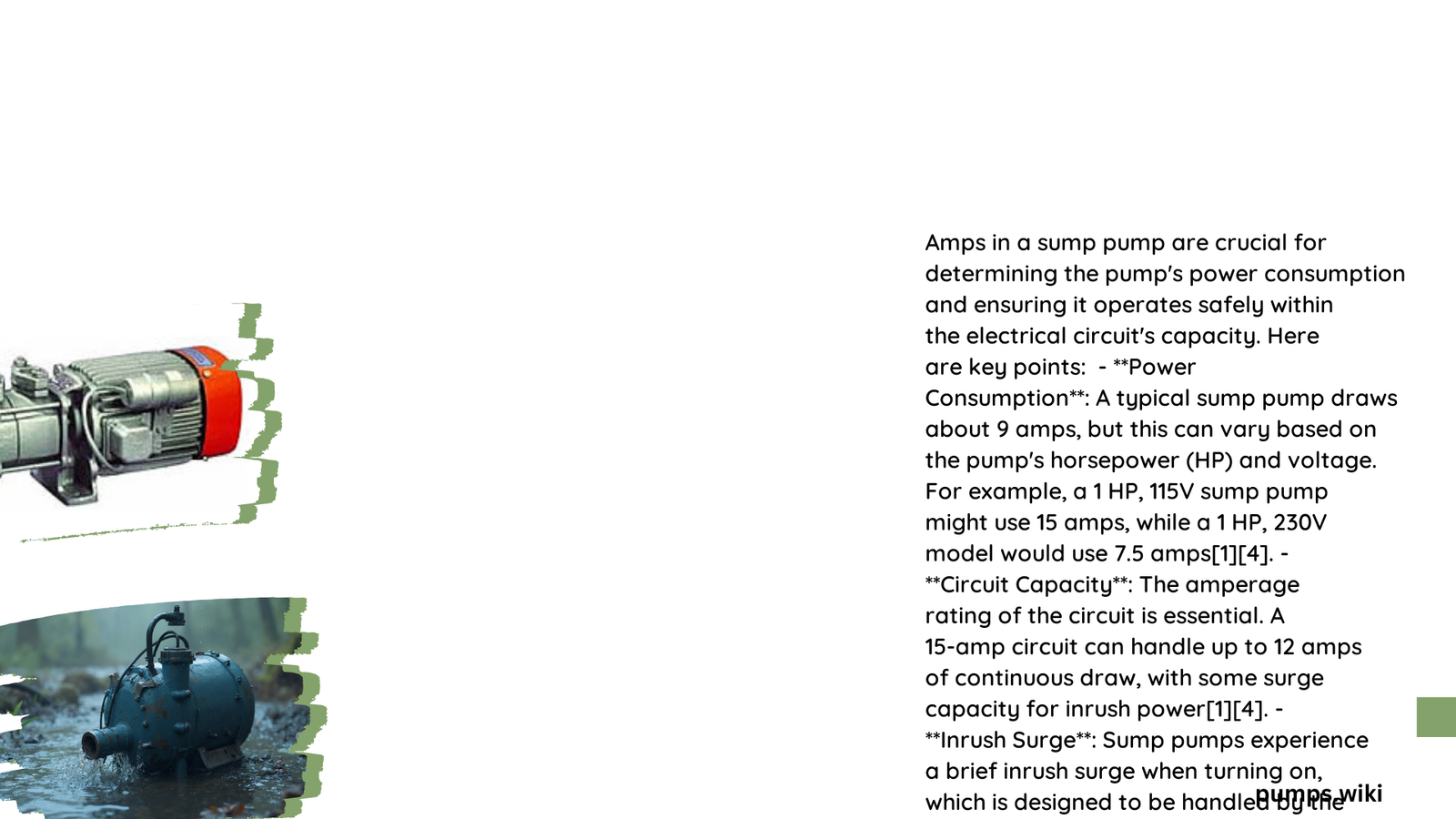Sump pump amp ratings are a critical yet often overlooked aspect of water management systems. Understanding the electrical current draw determines a pump’s capacity to remove water efficiently, prevent basement flooding, and ensure long-term reliability. Amp ratings directly influence performance metrics, power consumption, motor efficiency, and overall pump longevity, making them a crucial factor in selecting the right sump pump for your specific needs.
What Are Sump Pump Amp Ratings?
Amp ratings represent the electrical current a sump pump motor draws during operation. These ratings provide essential insights into the pump’s power, performance capabilities, and energy consumption. Different horsepower (HP) ratings correspond to specific amp draws, which homeowners must carefully consider when selecting a sump pump.
Typical Amp Ratings by Horsepower
| Horsepower | Typical Amp Draw | Voltage |
|---|---|---|
| 1/6 HP | 5-7 amps | 120V |
| 1/3 HP | 8-10 amps | 120V |
| 1/2 HP | 10-12 amps | 120V |
| 1 HP | 9-13 amps | 120V |
Why Do Amp Ratings Matter for Sump Pumps?

Performance and Workload Handling
Amp ratings directly correlate with a sump pump’s ability to:
- Handle vertical water lift distances
- Manage horizontal pipe runs
- Remove water volume efficiently
- Prevent basement flooding
- Operate under challenging conditions
Power Consumption Insights
The electrical current draw reveals critical information about energy efficiency:
- Higher amp ratings typically indicate more powerful pumps
- Actual power consumption includes electrical and mechanical inefficiencies
- Startup surges can be 6-7 times the normal running current
How Do Amp Ratings Impact Motor Efficiency?
Motor efficiency is inversely related to amp draw. More efficient motors consume fewer amps while delivering equivalent performance. Typical sump pump motor efficiencies range between 50-60%, meaning substantial electrical energy is converted into mechanical work.
Efficiency Calculation Example
For a 1 HP pump:
– Theoretical power requirement: 746 watts
– Actual power consumption: Approximately 1,400 watts
– Efficiency percentage: Around 53%
What Challenges Arise from Different Amp Ratings?
Potential Limitations
- High Amp Ratings:
- Require larger circuit breakers
- Generate more heat
- Potentially shorter motor lifespan
-
Higher electrical infrastructure demands
-
Low Amp Ratings:
- More energy-efficient
- Less heat generation
- Potentially longer motor life
- Risk of inadequate performance for demanding environments
Practical Considerations for Homeowners
When selecting a sump pump, consider:
- Basement water management requirements
- Vertical and horizontal water transport distances
- Available electrical circuit capacity
- Long-term energy consumption
- Potential maintenance costs
Recommended Selection Strategy
- Assess your specific water removal needs
- Calculate required vertical and horizontal water transport distances
- Verify electrical circuit compatibility
- Compare amp ratings across different pump models
- Consider long-term efficiency and reliability
Expert Recommendations
- Always consult a professional for precise sump pump sizing
- Consider backup power systems for critical installations
- Regularly maintain your sump pump to ensure optimal performance
- Monitor amp draw and electrical consumption periodically
Reference:
– Sump Pump Power Consumption Forum
– DIY Chat Room Electrical Discussions
– Sump Pumps Direct Guide
– Oakville Pump Blog
